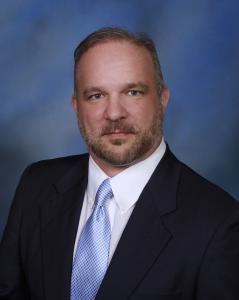Texas Hit-and-Run Accidents on the Rise; Pedestrians and Cyclists Most Often Hurt
Texas law requires drivers to stop at the scene, render aid and exchange information, but a growing number of negligent drivers flee the scene. by Haley Larkin
According to the AAA, a hit-and-run accident is any collision where at least one person involved in a crash flees the scene before providing sufficient information, aid, or failing to properly file reports on the incident. This definition is intentionally generalized because each state has its own threshold of liability.
Texas state law, for example, makes no exceptions for leaving the scene of an accident before filing the proper reports, rendering aid, and providing the correct information to all parties. The operator who is involved in a collision that involves death, bodily injury, or damage to a vehicle must give their name, address, vehicle registration number, and auto insurance information. The operator is also required to render aid and assistance, including transporting or making arrangements for the victim to see a physician or get to a hospital.
If the accident results in or is reasonably likely to result in injury or death of a person, the operator must stop at the scene. Failure to remain at the scene of the accident which results in the death or serious bodily injury is punishable as a felony of the third degree. Accidents involving injuries that are not defined as severe are punishable by as many as five years imprisonment, up to a $5,000 fine, or both.
Similarly, the operator of a vehicle that is involved in an accident that involves damage to a vehicle must stop at the scene, or close to the scene if the accident is in high traffic or a dangerous location. Operators who do not stop are liable to misdemeanor charges. For damage that is less than $200 to a vehicle, the operator can be charged with a Class C misdemeanor. For damage to the vehicle that is more than $200, the operator can be charged with a Class B misdemeanor.
Texas state law requires drivers to carry auto liability insurance or proof of financial responsibility sufficient to cover $30,000 for injuries per person up to $60,000 per accident, plus $25,000 for property damage. Accessing the at-fault driver’s liability coverage can be critical to helping car crash victims deal with the medical expenses, lost income and disruption to their lives an accident brings. Finding a hit-and-run driver after a crash involving injury or death is therefore at least as important to the injury victim as it should be to the police.
Gilbert T. Adams, III, a personal injury attorney at the Gilbert Adams Law Offices in Beaumont, utilizes investigators to track down drivers who left the scene, often with great success. “We often visit with nearby businesses or homeowners to evaluate whether security cameras picked up the collision or the fleeing driver,” says Adams. “Also,” Adams continues, “911 calls by passing motorists can yield identifying information.” According to Adams, depending on the damage caused, this information has a way of surfacing. “Aggressive investigative work usually yields good results,” he says.
What if the hit-and-run driver simply can’t be found? Uninsured Motorist protection, which is sometimes referenced as “UIM” coverage, will generally cover losses from a hit-and-run driver, as well as when someone is injured by an uninsured or underinsured driver. For this reason and others, attorney Adams cautions it is very important to promptly report the collision to law enforcement so they can not only investigate but also generate official documentation regarding the crash.
In Texas this year, the state reached a 20-year streak of at least one death on Texas roadways every single day. The National Highway Traffic Safety Administration (NHTSA) reported that in 2017, 14.47 people per 100,000 died in Dallas, which equals an average of two people killed every week for that year. In 2019, the latest statistics showed there were 3,610 motor vehicle traffic deaths in Dallas, alone.
The nature of a hit-and-run accident makes it difficult for researchers and local traffic experts to understand the full reason behind the rise in hit-and-run accidents, or the motive for fleeing the scene. Only about half of hit-and-run vehicle operators are ever caught, so understanding the motive and reason for fleeing the scene is difficult to capture and study. Some experts blame the increase in distractions of cell phones used by both drivers and pedestrians when crossing streets.
Another reason traffic safety experts blame the rise in injuries and fatalities from car accidents is the encouragement by cities for individuals to bike and walk rather than drive in congested areas without providing the infrastructure required to make a city safe for bicycle riders and pedestrians. Researchers at the AAA Foundation found that 65% of all hit-and-run accident victims are pedestrians or cyclists, and over the past 10 years, nearly 20 percent of all pedestrian deaths were a result of a hit-and-run car crash.
Gilbert T. Adams, III
Gilbert Adams Law Offices
+1 409-835-3000
email us here
Visit us on social media:
Facebook
Legal Disclaimer:
EIN Presswire provides this news content "as is" without warranty of any kind. We do not accept any responsibility or liability for the accuracy, content, images, videos, licenses, completeness, legality, or reliability of the information contained in this article. If you have any complaints or copyright issues related to this article, kindly contact the author above.

